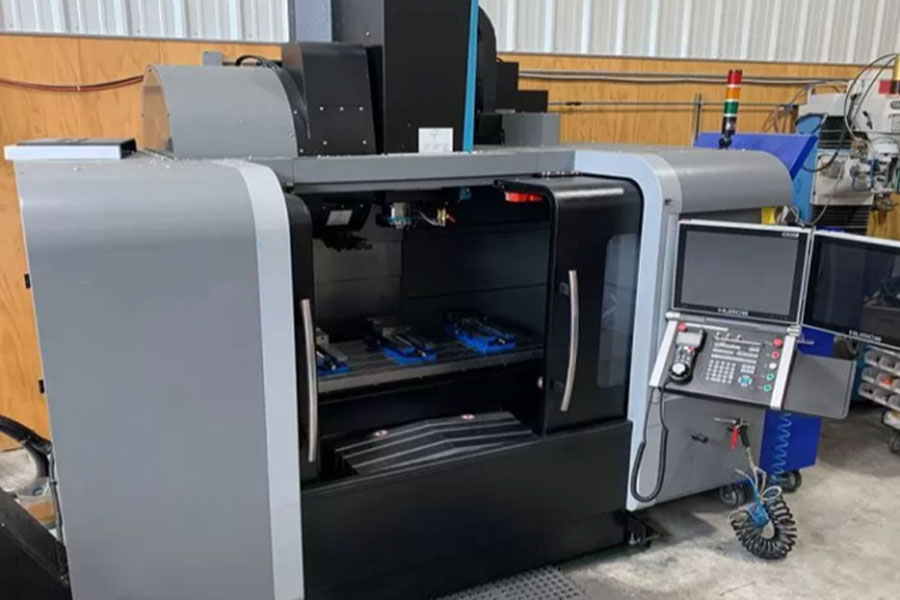Knowledge about Vertical CNC Milling Machines
Vertical CNC milling machines have emerged as a cornerstone of modern manufacturing, providing a seamless blend of precision and efficiency that traditional machining methods struggle to match. These machines can produce intricate components and parts that modern industries demand, from aerospace to electronics. Using a CNC vertical mill not only enhances production accuracy but also streamlines operations, reducing the time and labor traditionally required.
The demand for detailed and precise designs is ever-increasing in today’s fast-paced production environments. CNC milling machines lead the charge in meeting these demands by ensuring consistent quality across large production runs. Their computer-controlled operations mean reduced variability, a crucial factor in sectors where minor deviations can lead to significant challenges.
The Mechanics of Vertical CNC Milling Machines
At the heart of a vertical CNC milling machine is its innovative spindle, which moves predominantly along the vertical axis. This orientation allows for diverse operations such as drilling, boring, and more complex milling tasks. The integration of CNC technology means every cut and drill is computed with precision, ensuring all operations adhere to stringent guidelines set out by industry standards.
These machines are programmable, meaning operators can input detailed schematics and plans that the machine will follow to the letter. Because of the substantial decrease in mistakes and waste material, CNC milling is economical and efficient. This precision ensures that once a prototype is finalized, the machine can produce identical copies without deviations, proving invaluable in large-scale manufacturing where consistency is critical.
Industries Transforming with CNC Milling
CNC milling has been a transformative force across various industries. In the aerospace sector, producing lightweight, robust parts is vital. These parts often require tight tolerances and high precision, which CNC milling makes possible. Similarly, in the automotive industry, CNC milling aids in crafting parts that fit perfectly within complex assemblies, enhancing vehicle performance and safety.
The medical industry has also benefited greatly. From producing components for surgical instruments to crafting detailed bone structure replicas for study and practice, CNC milling provides the detail and accuracy often necessary for medical applications. This versatility has made CNC milling an indispensable tool across sectors, pushing the boundaries of what is possible in component design and manufacturing.
Advantages of Using Vertical CNC Milling
- High Precision: Produces detailed and intricate product features with remarkable accuracy, ensuring reduced chances of defects or rework.
- Flexibility: It is appropriate for a broad range of applications across industries since it is easily adaptable to fit different shapes and sizes.
- Efficiency: Enhances the manufacturing process by minimizing manual interventions, thus reducing production times and increasing throughput.
These machines speed up production without compromising quality. This balance of speed and precision is especially beneficial in industries where quality cannot be sacrificed for time, such as the production of safety-critical components.
Considerations When Buying a Vertical CNC Milling Machine
Investing in a CNC milling machine is a significant decision that requires careful consideration. Prospective buyers should examine factors like the milling machine’s range and capabilities, including spindle speed, the size of the working table, and the software’s compatibility with existing systems. Future scalability and how the machine integrates with existing production lines can also be critical.
Engaging with industry forums and consulting resources, such as industry guidelines, can provide invaluable insights. These can help businesses avoid common pitfalls and select machines best suited to their needs. Such diligence ensures a substantial return on investment and long-term satisfaction with the equipment chosen.
Challenges Faced by Users
Despite their numerous advantages, CNC milling machines come with their own set of challenges. The initial investment in the machine and the training required to operate it can be steep. The complexity of modern CNC machinery means that skilled technicians are necessary for operations and maintenance.
Regular training and keeping abreast of technological advancements can mitigate many issues. The operation of CNC machines is constantly changing along with technology. Staying updated through training sessions and workshops can ensure operators maximize their machines’ abilities.
Future Trends in CNC Milling
Looking to the future, the marriage of CNC milling with advancements in artificial intelligence and machine learning stands to revolutionize the field further. AI can enhance the precision of operations, introducing real-time error detection and correction, reducing reliance on skilled manual inspection, and further elevating productivity.
As manufacturers strive for improved efficiency and quality, CNC milling machines will increasingly incorporate these cutting-edge technologies, making them an even more essential tool in the digital transformation of manufacturing practices worldwide.
How CNC Milling is Shaping the Modern World
CNC milling, or Computer Numerical Control Milling, has profoundly influenced various sectors, ranging from intricate aerospace designs to producing standard industrial components. This technology utilizes advanced software and machinery to produce exact parts with complex geometries, making it a valuable tool for manufacturers and engineers. The advantages offered by CNC milling include exceptional accuracy and repeatability and the ability to create custom designs with remarkable efficiency. Rapid prototyping and small production runs made possible by CNC milling enable businesses to quickly respond to market needs without sacrificing quality as industries work to increase efficiency. Moreover, the continual development of CNC milling technology, including improvements in automation, machine intelligence, and material science, keeps it at the cutting edge of manufacturing. These advancements ensure that businesses remain competitive in a dynamic landscape where the expectations for performance and speed are constantly evolving. As a result, CNC milling is more than just a manufacturing technique, as it’s a crucial component in driving innovation across various industries.

